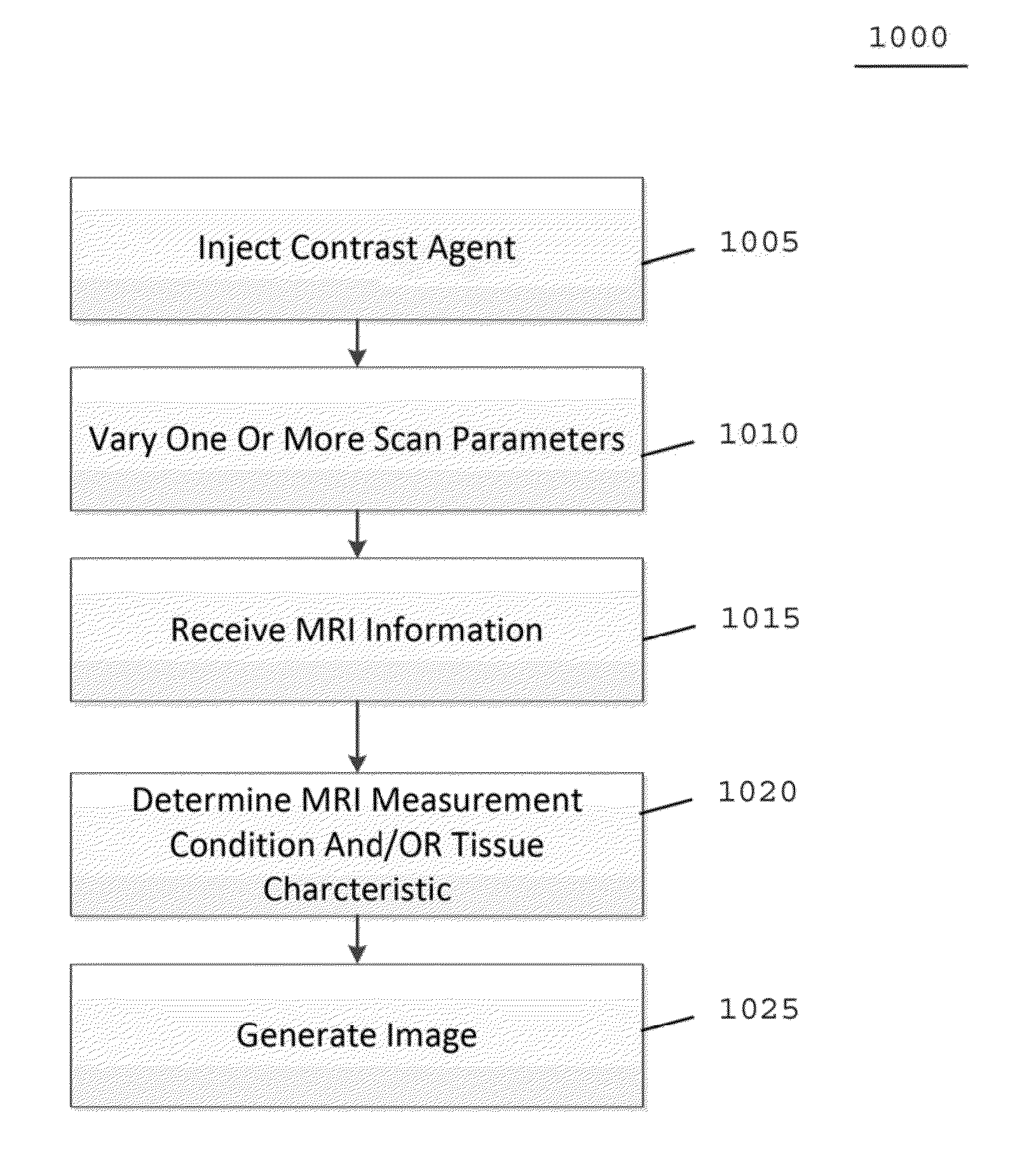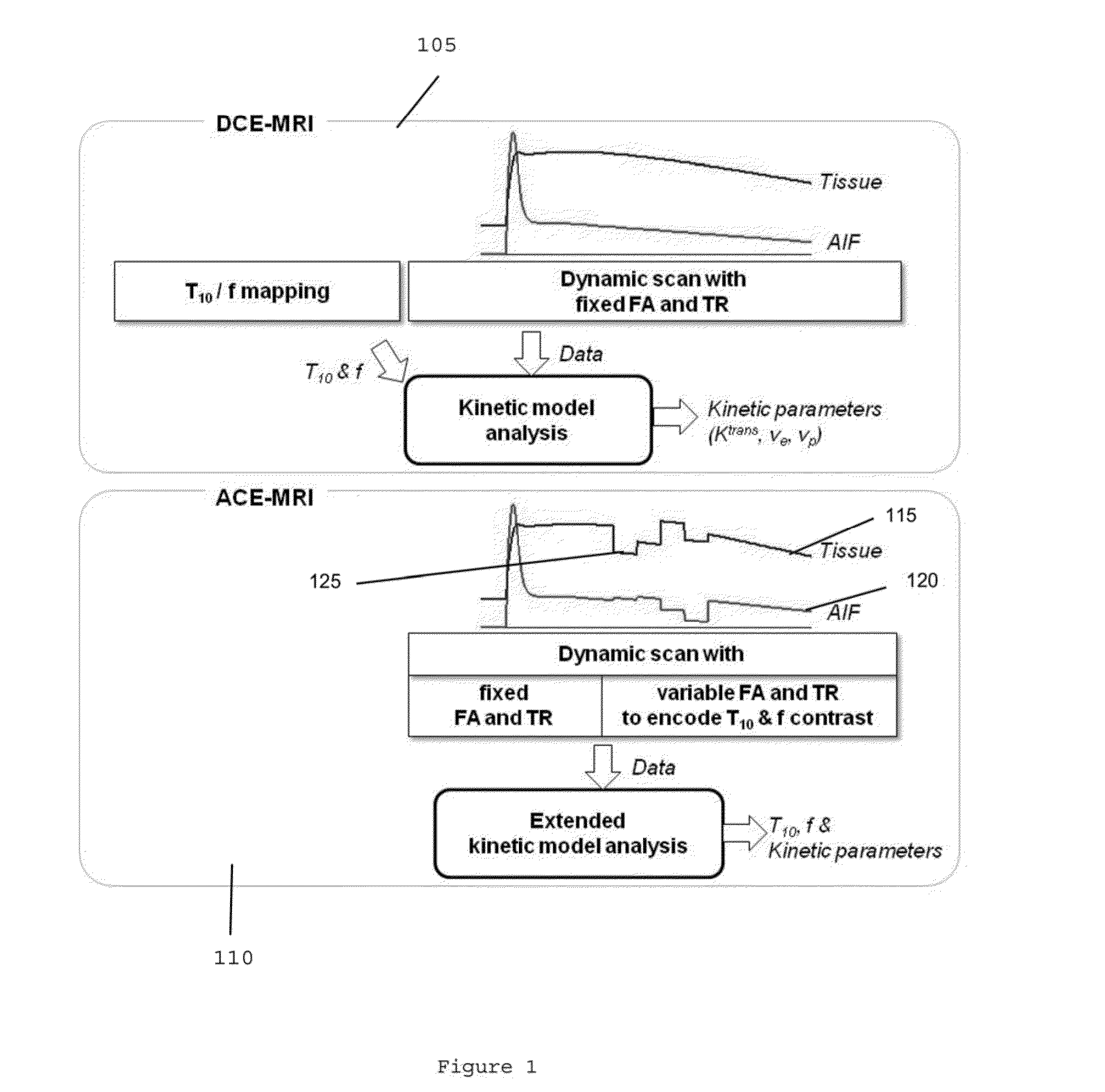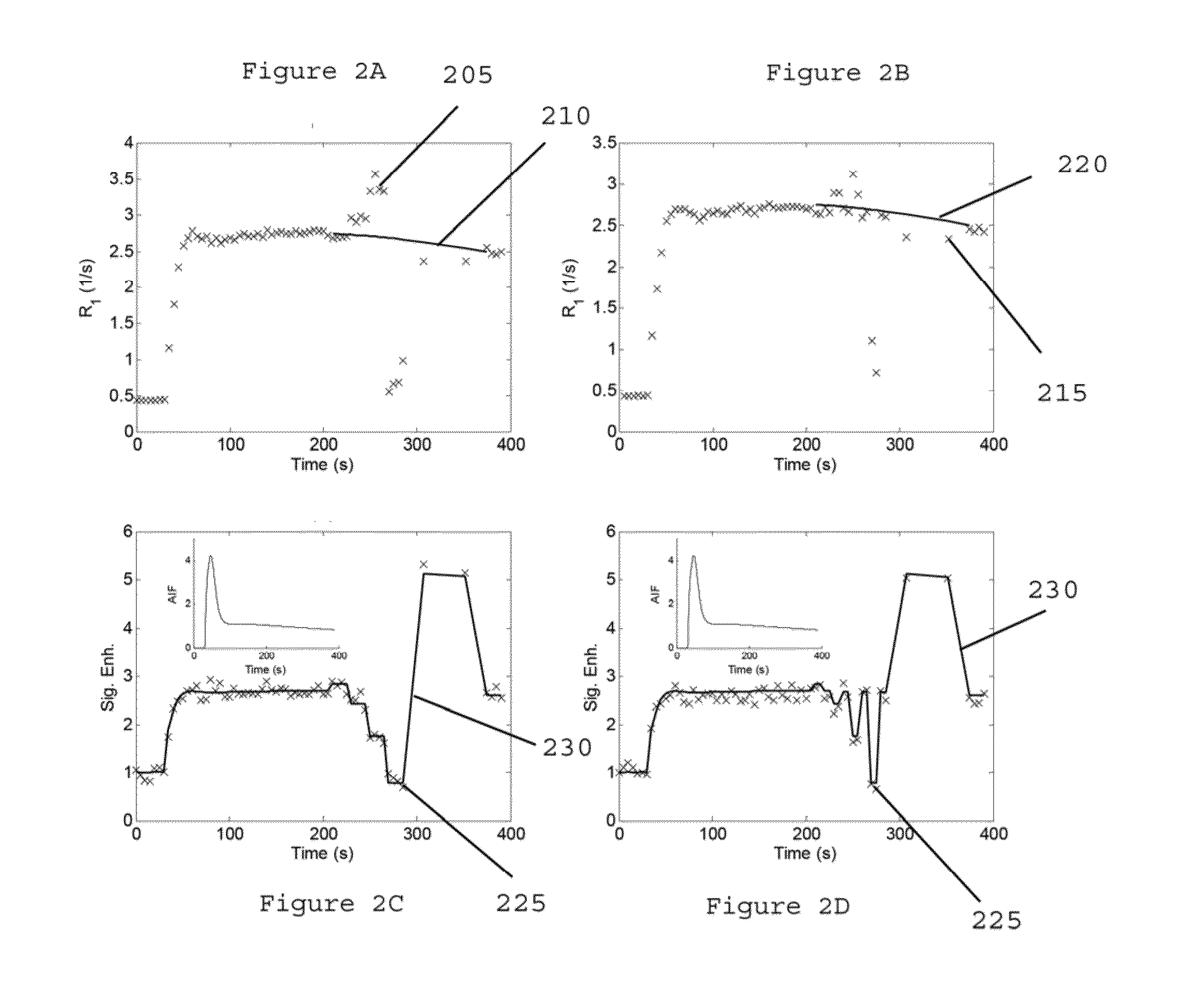System, method, and computer-accessible medium for determining at least one characteristic of at least one tissue or at least one MRI measurement condition of the at least one tissue using active contrast encoding magnetic resonance imaging procedure(s)
a technology of magnetic resonance imaging and at least one characteristic, applied in the field of magnetic resonance imaging, can solve the problems of limited diagnostic accuracy, further increase of scan time, and difficulty in quantitative analysis of dce-mri data, and achieve the effect of enhancing the contrast of the magnetic resonance imaging curv
- Summary
- Abstract
- Description
- Claims
- Application Information
AI Technical Summary
Benefits of technology
Problems solved by technology
Method used
Image
Examples
Embodiment Construction
[0008]An exemplary system, method and computer-accessible medium for generating an image of a tissue(s) can be provided, which can include, for example, receiving magnetic resonance imaging information regarding the tissue(s) including an intensity(s) of a signal(s) provided from the tissue(s), actively encoding the signal intensity(s) with a flip angle(s) and a repetition time(s) of the pulse sequence (s), and generating the image of the tissue(s) based on the encoded signal intensity(s). A flip angle correction factor(s), and a T10 value(s), can be embedded in the magnetic resonance information. The flip angle correction factor(s) can be based on a (i) B1 field inhomogeneity, (ii) a radio frequency pulse profile, (iii) a nonlinearity of a radio frequency amplifier, (iv) properties of the tissue(s), and / or (v) imperfect spoiling in steady-state imaging.
[0009]In some exemplary embodiments of the present disclosure, the flip angle(s) can be scaled based on the flip angle correction f...
PUM
 Login to View More
Login to View More Abstract
Description
Claims
Application Information
 Login to View More
Login to View More - R&D
- Intellectual Property
- Life Sciences
- Materials
- Tech Scout
- Unparalleled Data Quality
- Higher Quality Content
- 60% Fewer Hallucinations
Browse by: Latest US Patents, China's latest patents, Technical Efficacy Thesaurus, Application Domain, Technology Topic, Popular Technical Reports.
© 2025 PatSnap. All rights reserved.Legal|Privacy policy|Modern Slavery Act Transparency Statement|Sitemap|About US| Contact US: help@patsnap.com



